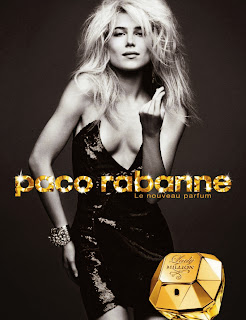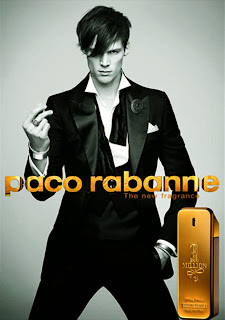Paragraph 2; look at the areas of media the question effects;
-Film
find case study material on each of these examples and go into detail about how each one has influenced the media, keep gong back to the question and stay on task.
Paragraph 3; Talking about the money, and the effect it has had on the global institutions. Talk about the box office and how it influences films and helps films do well. Find examples that are most relevant to the question set.
Paragraph 4; Look at the different companies, Disney, Paramount and look how successful they have been with the film industry referring each time to the question.
NOTES...
Examples of global institution are Major Film Studios, A major film studio is a film producer and production company that releases a substantial number of films annually.
The Big Six film studios are:
1. Warner Bros. Pictures. Comprising a whopping 19.7 per
cent of the US/Canadian market share (2007 figures), Warner Bros. Pictures is
the biggest player in the film industry. Securing the rights to major films
like Harry Potter, Superman, Batman, The Matrix and Star Wars have made Warner
Bros. the No. 1 name in the business.
2. Paramount Pictures. With 15.5 per cent of the US/Canadian
market share (2007 figures), Paramount Pictures continues to be one of the most
successful film production companies in the world. Star Trek, War of the
Worlds, the Mission Impossible series, Transformers and Tropic Thunder are just
a few of the popular films produced by Paramount Pictures.
3. Walt Disney. One of the most renowned film production
companies in the history of the business, Walt Disney now holds 15.3 per cent
of the US/Canadian market share (2007 figures). With highly successful movies
like Pirates of the Caribbean, National Treasure, Meet the Robinson and
Enchanted, there's no doubt that Disney will continue to play a key role in the
industry for years to come.
4. Columbia Pictures. Comprising 12.9 per cent of the US/Canadian
market share (2007 figures), Columbia Pictures remains a big player in the
business. Some of this company's recent successes include Casino Royal, The DA Vince Code, the Spider-Man series and Step Brothers.
5. Universal Studios. 12.2 per cent of the US/Canadian
market share (2007 figures) belongs to Universal Studios, which continues to
make millions for the film industry. With major hits like the Borne series
(Borne Identity, Borne Supremacy and Borne Ultimatum), The American Pie series, Knocked Up, American Gangster and The Incredible Hulk, it's very clear
that Universal Studios knows what it takes to make money in this industry.
6. 20th Century Fox. Also known as "Twentieth Century
Fox," this highly successful movie production company makes up 11.9 per
cent of the US/Canadian market share (2007 figures). Some of the biggest and
most successful movies from this empire include the X-Men series, Mr. and Mrs
Smith, Star Wars Episodes II and III, and the Fantastic Four.
Roughly 9/10 films in the UK are seen as a result of these
USEFUL TERMINOLOGY.
Convergence - is the tendency for different technological systems to evolve toward
performing similar tasks. e.g. ability to watch video on your phone, tablet, console etc
performing similar tasks. e.g. ability to watch video on your phone, tablet, console etc
Synergy – The interaction of two or more institutions/companies to ensure a larger effect than
if they acted independently. This is beneficial for each company through efficiencies in expertise and costs.
Exchange – How we access films
Proliferation - the spread of something
Hardware – the physical equipment used to either record, watch or distribute films
Content – the ‘things’ put in a film (SFX, 3D etc)
MARK SCHEME.
“Media production is dominated by global institutions, which
sell their products and services to national audiences”. To what extent do you agree with this statement?
Candidate focus on one of the following media areas, though they may make reference to other media areas, which they have studied:
Film
Candidate focus on one of the following media areas, though they may make reference to other media areas, which they have studied:
Film
Candidates will be assessed on their ability to illustrate
patterns of production, distribution, exchange and consumption through relevant
case study examples and their own experiences as . Candidates may
cover the following material in their responses to the question:
Production practices which allow texts to be constructed for specific audiences
Distribution and marketing strategies to raise audience awareness of specific products or types of products
Production practices which allow texts to be constructed for specific audiences
Distribution and marketing strategies to raise audience awareness of specific products or types of products
General Mark scheme
Explanation/analysis/argument
20 marks Use of examples
20 marks Use of terminology
10 marks.
20 marks Use of examples
20 marks Use of terminology
10 marks.
Level 1
Explanation/analysis/argument (0-7 marks) Shows minimal
understanding of the task Minimal knowledge and understanding of institutional/audience
practices, general opinions or assertions predominate Minimal argument evident,
with little reference to case study material Of minimal relevance to set
question or a brief response (under one and a half sides of answer booklet).
Use of examples (0-7 marks) Offers minimal use of case study material Offers a
limited range of (or inappropriate) examples Offers examples of minimal
relevance to set question. Use of terminology (0-3 marks) Minimal or frequently
inaccurate use of appropriate terminology. Some simple ideas have been
expressed. There will be some errors of spelling, punctuation and grammar,
which will be noticeable and intrusive. Writing may also lack legibility.
Level 2
Explanation/analysis/argument (8-11 marks) Shows basic
understanding of the task Basic knowledge and understanding of institutional/audience
practices, Factual knowledge
will have some accuracy Basic argument evident, with some reference to case
study material Some relevance to set question. Use of examples (8-11 marks)
Offers some evidence from case study material Offers a partial range of
examples from case study and/or own experience Offers examples of some
relevance to the set question. Use of terminology (4-5 marks) Some terminology
used, although there may be some inaccuracies. Some simple ideas have been
expressed in an appropriate context. There are likely to be some errors of
spelling, punctuation and grammar of which some may be noticeable and
intrusive.
Level 3
Explanation/analysis/argument (12-15 marks) Shows proficient
understanding of the task Proficient knowledge and understanding of institutional/audience
practices, factual knowledge is mostly accurate Some developed argument, supported
by reference to case study material Mostly relevant to set question. Use of
examples (12-15 marks) Offers consistent evidence from case study material
Offers a range of examples from case study and/or own experience Offers
examples which are mostly relevant to the set question. Use of terminology (6-7
marks) Use of terminology is mostly accurate. Straightforward ideas have been
expressed with some clarity and fluency. Arguments are generally relevant,
though may stray from the point of the question. There will be some errors of
spelling, punctuation and grammar, but these are unlikely to be intrusive or
obscure meaning.
Level 4
Explanation/analysis/argument (16-20 marks) Shows excellent
understanding of the task Excellent knowledge and understanding of institutional/audience
practices, factual knowledge is relevant
and accurate A clear and developed
argument, substantiated by detailed reference to case study material Clearly
relevant to set question. Use of examples (16-20 marks) Offers frequent evidence
from case study material, award marks to reflect the range and appropriateness
of examples from case study and/or own experience Offers examples which are
clearly relevant to the set question. Use of terminology 8-10 marks) Use of
terminology is relevant and accurate. Complex issues have been expressed
clearly and fluently. Sentences and paragraphs, consistently relevant, have
been well structured, using appropriate technical terminology. There may be
few, if any, errors of spelling, punctuation and grammar.













